Nowadays unique is an overused and abused word – yet the Helli Lasch Challenge is a truly unique event. Since 2003 this biennial event has seen the reigning World Champions and the South African squad sharing two weeks of intense flying and moving experiences in an exclusive setting in the spirit of Helli Lasch.
Before reporting about the Challenge itself, it is important to give some insight to the man who inspired the Challenge.
The Inspiration: Helli Lasch
Who was Helli Lasch? An internet search yields little insight into a man who was passionate, inspirational and charismatic. And to capture the essence of 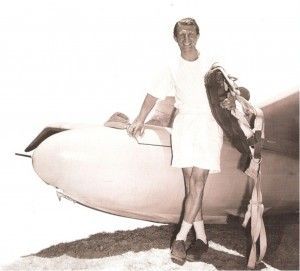 such a man in a few words is a near impossibility.
such a man in a few words is a near impossibility.
Philip Wills described Helli as one of the great romantic pilots. His lifelong ambition was to fly from the highveld city of Johannesburg to the coastal city of Durban, a 650km feat he often attempted but one that was repeatedly thwarted by the changing weather near the Indian Ocean.
Helli was born in Germany in 1912, into a family that had ran a large and successful machine tool manufacturing business. He was a gifted skier (when skiing as a sport was in its infancy) and an excellent player of both golf and tennis. He came to South Africa in 1932 to gain some experience before joining the family firm, but having met and married Orcillia and with impending war in Europe, he stayed and started his own business.
Helli started gliding in 1947, taking a course at Belpmoos (Bern), Switzerland and going solo on the fifth day in a Grunau Baby. Sixteen days later he had completed his Silver C flying a DFS Meise and a Spalinger S.18. Inspired, he flew in the (South African) National Gliding Rallies in January 1948 and December 1948, winning the second event in a Minimoa flying about 200km each day. The rally report stated that Helli’s progress was ‘phenomenal’.
Helli’s writing style epitomised his character: a log book entry on April 1948 notes that “Released cable at 15m by mistake, hard landing, light damage to plane”. In fact Helli had released the winch cable instead of dropping the undercarriage dolly of the S.18, stalled in and both wings sheared at the roots.
In February 1950 Helli captured the South African altitude record climbing in a cu-nim to 23,500ft. “The lift was incredibly smooth 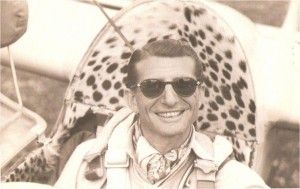 inside the cloud and as confirmed by the barograph after the flight, I must have had lift up to 20-25 m/s. I was perturbed to find that it was difficult to move the stick, which indicated heavy icing. The ASI had become unserviceable and the din caused by the hail became so great that I could no longer judge the airspeed.” And a few days later Helli set a new South African distance and goal record with a 444km flight from Johannesburg to Estcourt. (Maybe it was this flight that triggered his dream to fly to Durban as after that he kept bathing trunks in his cockpit…)
inside the cloud and as confirmed by the barograph after the flight, I must have had lift up to 20-25 m/s. I was perturbed to find that it was difficult to move the stick, which indicated heavy icing. The ASI had become unserviceable and the din caused by the hail became so great that I could no longer judge the airspeed.” And a few days later Helli set a new South African distance and goal record with a 444km flight from Johannesburg to Estcourt. (Maybe it was this flight that triggered his dream to fly to Durban as after that he kept bathing trunks in his cockpit…)
Helli flew in the World Gliding Championships in 1950 at Örebro in Sweden – with his Air 100 cockpit lined with cheetah skin – and at one point flying over unlandable terrain, he said he was so low that “he could see the famous Swedish trolls”. Helli also flew in the World Gliding Championships in 1952 at Quatros Vientos near Madrid in Spain, and the 1954 World Gliding Championships at Camphill – or ‘Damphill’ – in the UK.
Then in 1962 came a turning point. While on a business trip to Berlin, Helli took an opportunity to look at the SB6 of Akaflieg Braunschweig and he met Björn Stender, the man behind the SB6. Helli and Björn spent a day sketching a radically new glider and Helli agreed to finance the whole project.
The BS-1 was an 18m glider with full span ailerons and flap, composite construction and a sleek fuselage. 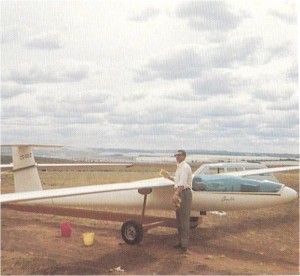 It first flew in 1962 and was a design so modern that it would not appear unusual in the 21st century. (Remarkably, the D-36 designed by the legendary team of Friess, Lemke, Waibel, and Holighaus only flew in 1964, two years later.)
It first flew in 1962 and was a design so modern that it would not appear unusual in the 21st century. (Remarkably, the D-36 designed by the legendary team of Friess, Lemke, Waibel, and Holighaus only flew in 1964, two years later.)
With a minimum sink of 0.5 m/s and a best glide of 1:45, the performance of the BS-1 was world class; in 1967 Alfred Rohm flew a BS-1 in West Germany to achieve a world record for 300km of 135.3kph, and in 1971 Terry Thys, a Californian pilot, flew 917km. Helli’s BS-1 was a 1962 Christmas present.
Sadly Björn Stender died in 1963 while test flying the second BS-1, when the glider broke up at high speed due to flutter and his parachute failed to open.
While Helli revelled flying his BS-1 and flew more than 120 hours in ‘Orcillia’, this came to an abrupt end in 1967. Approaching an airfield at high speed, he heard “small noises like a rat gnawing at some timber and I see my right wing folding back like a jack-knife.” Helli bailed out but the glider disintegrated in the air and as Helli wrote at the time, “what’s even worse, I cannot find my left shoe anymore! I found my glasses; they passed me by when I was hanging on the parachute.”
Orcillia ordered an H-301 Libelle to replace the BS-1. At Helli’s request Porsche supplied Glasflügel with the leather for the cockpit, so that it matched the latest in Helli’s taste for sports cars. In 1982 Helli acquired a DG400 – in which he died on approach to land at Parys.
Helli preferred flying long distances and he liked to be the ‘lonely eagle’. Rather than ‘goldfish bowl flying’, he set targets that stretched both man and machine. He was successful in everything he turned his hand to, with a style that combined eccentricity, determination and discipline. In contrast to his highly competitive nature, he was not a hard man. But most special, Helli treated everyone as an individual. Described as a modern day Hero, Helli was a legend.
The Helli Lasch Challenge
In 1968 one of Helli’s three daughters, Orcillia (Strilli) married Nicky Oppenheimer. Nicky has remained an aviation enthusiast – a few years ago he took delivery of an Agusta AW139 helicopter in Italy and was one of the flight crew for the ferry down through Africa to Cape Town. The 2001 World Gliding Championships in Mafikeng were actively supported by the Oppenheimer family, keen to promote gliding in South Africa. The WGC2001 was possibly one of the best championships in recent history and showed the gliding world that South Africa had some spectacular soaring conditions. This became the catalyst to create the Helli Lasch Challenge.
First held in 2003 and every two years since, Nicky and Strilli have hosted the Helli Lasch Challenge at Tswalu Kalahari reserve. The objectives of the Challenge are:
- A living memorial to Helli Lasch
- To foster international relations
- To promote South Africa as a gliding destination
- To develop the competition skills of the South African gliding team
The Challenge is an exclusive, invitation-only, all-expenses-paid event where the current World Champions in the Open, 18m, 15m and Standard Classes are invited (with their partners) for two weeks to the Tswalu Kalahari game reserve. Uniquely the Helli Lasch Challenge combines staying at one of the finest game lodges in Africa with some of the finest soaring in the world.
Outside the period of the Challenge, Tswalu Airfield is solely used to ferry visitors from Jo’burg or Cape Town to the reserve, so for the Challenge lots of special arrangements are made: the sailplanes for the World Champions are ferried to Tswalu, a tug plane is also ferried in, Avgas fuel has to be organised, the runway lighting posts are removed to avoid potential incidents.
Members of the current South African team squad are also privileged to attend for a week, where they benefit from competition training with a former World Champion. The current World Champions also share their knowledge and expertise with the South African pilots to help develop the competition skills of the South African squad.
Michael Sommer has said that the prospect of being invited to the Helli Lasch Challenge was one of the main reasons for winning the World Gliding Championships again.
Tswalu Kalahari
Located some 560km to the west of Johannesburg, not far from the Botswana border, Tswalu Kalahari is the largest privately owned game reserve in South 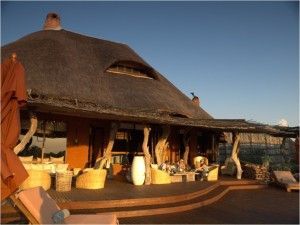 Africa, covering more than 100,000 hectares. It is five-star luxury with an eco-conscience. With a limit on the number of guests at a time, the focus is on conservation rather than catering to tourists rushing through wildlife checklists. In addition to the conservation work, Tswalu has projects for socio-economic development and responsible environmental management.
Africa, covering more than 100,000 hectares. It is five-star luxury with an eco-conscience. With a limit on the number of guests at a time, the focus is on conservation rather than catering to tourists rushing through wildlife checklists. In addition to the conservation work, Tswalu has projects for socio-economic development and responsible environmental management.
Tswalu is located in the Korannaberg mountains and with areas of Kalahari dunes and pans. The area is not true desert but semi-arid grassland with enough rain to support a landscape of camelthorn scrub trees and grasslands. Originally it was farmed with cattle, sheep and goats. Then the farms were bought out and the area was converted into a hunting lodge, including introduction of non-endemic species. With the involvement of the Oppenheimers the emphasis changed to conservation, with the objective “to restore the Kalahari to itself”.
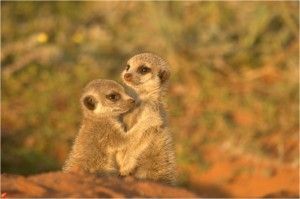 Gradually certain species have been phased out and others reintroduced. Efforts were concentrated on the endangered desert black rhino, lions, cheetahand wild dogs. Black rhino have been successfully bred since 1999. Black rhino are endangered, not due to the typical reasons of habitat destruction, but due to poaching. With Tswalu being more isolated than other reserves and with a dedicated rhino protection unit, it has become a haven for black rhino.
Gradually certain species have been phased out and others reintroduced. Efforts were concentrated on the endangered desert black rhino, lions, cheetahand wild dogs. Black rhino have been successfully bred since 1999. Black rhino are endangered, not due to the typical reasons of habitat destruction, but due to poaching. With Tswalu being more isolated than other reserves and with a dedicated rhino protection unit, it has become a haven for black rhino.
Tswalu is home to four of the ‘big five’, with lions, leopards, buffalo and rhino – and much more, with around 80 species of mammals and 240 species of birds, a true haven of biodiversity. 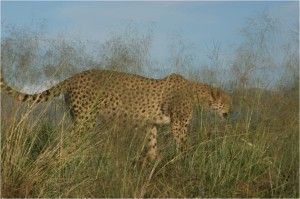 There are rare antelope such as roan, sable, and tsessebe. And there are many lesser known but equally engaging animals such as aardvark, bat-eared foxes, porcupine, and meerkats. The game rangers are full of expert information – whether it is explaining the physiological effects of the different snake venoms, or the behaviour of a Kori Bustard (the heaviest bird capable of flight), or how social weaver birds are nest-building fanatics (creating nests weighing a ton or more until they collapse under their own weight) or how to track cheetah and get close-close.
There are rare antelope such as roan, sable, and tsessebe. And there are many lesser known but equally engaging animals such as aardvark, bat-eared foxes, porcupine, and meerkats. The game rangers are full of expert information – whether it is explaining the physiological effects of the different snake venoms, or the behaviour of a Kori Bustard (the heaviest bird capable of flight), or how social weaver birds are nest-building fanatics (creating nests weighing a ton or more until they collapse under their own weight) or how to track cheetah and get close-close.
But more than ticking off lists of animals, Tswalu is a total Kalahari experience. Vast skies – especially striking at night with the absence of light pollution – seeming limitless space, the only noise that of insects and birds.
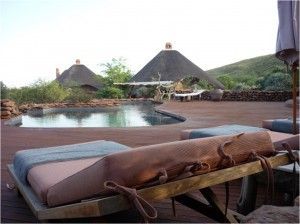 The Motselodge itself is quiet luxury and understated elegance. Situated at the base of the Korannaberg mountains in the western part of the reserve, it faces west across the Kalahari grasslands. There are no fences around the Motse and the antelope sometimes wander through. Motse means “village” in the Tswana language and it has eight thatched “legae” (Tswana for “little houses”) or suites. Linen sheets, outdoor showers, contemporary furniture, African artefacts give a form of safari chic.
The Motselodge itself is quiet luxury and understated elegance. Situated at the base of the Korannaberg mountains in the western part of the reserve, it faces west across the Kalahari grasslands. There are no fences around the Motse and the antelope sometimes wander through. Motse means “village” in the Tswana language and it has eight thatched “legae” (Tswana for “little houses”) or suites. Linen sheets, outdoor showers, contemporary furniture, African artefacts give a form of safari chic.
The Motse main house has elevated decks, elegant lounges, an infinity pool and even a spa. The meals are haute cuisine – even the gourmet picnics – and it is now a tradition that the Challenge features one evening with a dinner on top of a sand dune in the middle of the reserve.
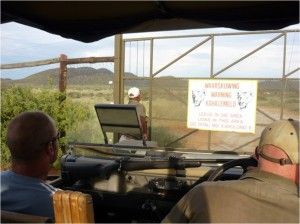 Tswalu is a special experience. Personal highlights include standing on the airfield listening to a male lion’s locating grunts, walking through the long grass to within a few metres of a cheetah and watching shooting stars in a sky dense with unfamiliar constellations and stars. And perhaps the frisson of opening the electrified gate into the eastern part of the reserve – the lion side – in the pitch dark of the early hours of the morning to check on the gliders during a storm.
Tswalu is a special experience. Personal highlights include standing on the airfield listening to a male lion’s locating grunts, walking through the long grass to within a few metres of a cheetah and watching shooting stars in a sky dense with unfamiliar constellations and stars. And perhaps the frisson of opening the electrified gate into the eastern part of the reserve – the lion side – in the pitch dark of the early hours of the morning to check on the gliders during a storm.
World Champions and the South African Squad
The World Champions invited to the 5th Helli Lasch Challenge [March 2011] were:
- Michael Sommer (Germany) – WGC2010 Open Class Champion at Szeged, Hungary (and Open Class Champion at WGC2006 and WGC2008)
- Sebastian Kawa (Poland) – WGC2010 Standard Class Champion at Priedvidza, Slovakia (and previously Champion at WGC2003, WGC2004 and WGC2006)
- Stefano Ghiorzo (Italy) – WGC2010 15m Class Champion at Szeged, Hungary
- ZbigniewNieradka (Poland) – WGC2010 18m Class Champion at Szeged, Hungary
- Sue Kussbach (Germany) – WWGC2009 Standard Class Champion at Szeged, Hungary
The South African Squad pilots each spent only (only!!!) one week at Tswalu, with the first week for the Open/15m/18m Class pilots and the second week for Club/Standard Class pilots:
- Oscar Goudriaan – WGC2001 Open Class champion
- Uys Jonker – runner-up in WGC2010 18m Class
- Attie Jonker – fifth in WGC2010 18m Class
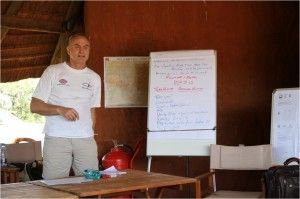 Arnold Geerlings
Arnold Geerlings- Mark Holliday
- Daniel Rodic
- Jennifer Bradley
- Jaco Burger
- AP Kotze
- Wayne Schmidt
- Maneste Schmidt
- Konrad Stark
The SA Squad coach is Andy Davis (Standard Class Champion in WGC1993 and WGC2003), and the World Champions also contributed to the group 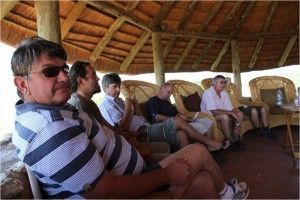 discussions in the morning, giving their own perspective on competitive techniques and winning factors. Each day one of the SA Squad flew with Andy in the ASH25.
discussions in the morning, giving their own perspective on competitive techniques and winning factors. Each day one of the SA Squad flew with Andy in the ASH25.
To give some insight on the experience of being invited to the Helli Lasch Challenge, Sue Kussbach (WWGC Champion), AP Kotze (South African squad pilot), and Stefano Ghiorzo (WGC Champion) give some personal reflections.
Personal Reflections: Sue Kussbach
What were your impressions of South Africa? This was my first time in South Africa and a lot of people had told me that it would be nice. In fact it was more than nice, it was excellent.
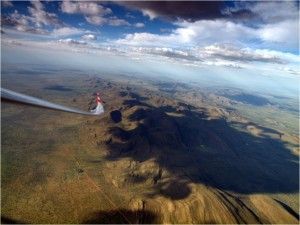 What did you enjoy at Tswalu and were there any special moments? Tswalu is a special place. Everyone was so interested in taking care of us, and very kind and helpful, answering all the questions that we ‘city people’ had about all the wildlife. I’ve often been to zoos in Germany but seeing the animals truly at home was wonderful. The combination of being able to go on a game drive and have a great flight in one day was really special (though at the end I was so tired you would not believe it!).
What did you enjoy at Tswalu and were there any special moments? Tswalu is a special place. Everyone was so interested in taking care of us, and very kind and helpful, answering all the questions that we ‘city people’ had about all the wildlife. I’ve often been to zoos in Germany but seeing the animals truly at home was wonderful. The combination of being able to go on a game drive and have a great flight in one day was really special (though at the end I was so tired you would not believe it!).
What did you think of the flying in South Africa? The flying conditions are so good, you cannot compare it to Germany. My longest flight was 720km, landing after a big storm. The fastest was a 400km task that we all flew in the first week, with probably everyone achieving around 140kph. The flying was so good, I think I must try and come back in the future.
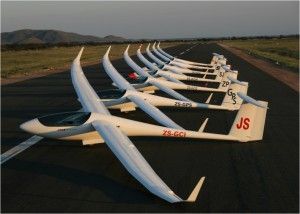 Do you have any observations about the SA Squad training? In Germany we need to make the most of the weather so the ground school is usually in the evening before. In South Africa the flying conditions are so good that a morning training session works. I tried to join the training sessions, but it was not always possible after an early morning game drive! But I think the SA Squad training is very well done.
Do you have any observations about the SA Squad training? In Germany we need to make the most of the weather so the ground school is usually in the evening before. In South Africa the flying conditions are so good that a morning training session works. I tried to join the training sessions, but it was not always possible after an early morning game drive! But I think the SA Squad training is very well done.
What were your personal highlights of the whole experience? I will never forget the first day when we visited Soweto, when we could talk to a lot of people and really learn the history of South Africa. And at Tswalu, the combination of flying with excellent pilots and the game drives was so special.
Personal Reflections: AP Kotze
What did you enjoy at Tswalu and were there any special moments? The wildlife experience was wonderful, even for a South African. Service is always with a smile and the staff at Tswalu made us feel welcome and at home from day one. A personal special moment was on the last day when I was thermalling 8km to the north of Tswalu airfield and saw an LS6 with me in the thermal – and suddenly realised I was thermalling with a World Champion! Turns out it was Zibi.
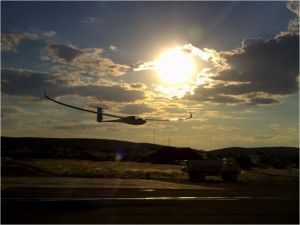 Do you have any observations about the SA Squad training? We never get the impression that the SA pilots are truly a team, as they always seem to be individuals mostly doing their own thing. At Tswalu this was very different – I always felt part of a group which improves the performance and concentration of each pilot as I didn’t want to let the team down.
Do you have any observations about the SA Squad training? We never get the impression that the SA pilots are truly a team, as they always seem to be individuals mostly doing their own thing. At Tswalu this was very different – I always felt part of a group which improves the performance and concentration of each pilot as I didn’t want to let the team down.
What did you learn flying with Andy Davis? Routing along energy lines was the most important lesson, reducing thermalling time and increasing cross-country speed. Thermal selection is also improved because of stopping less often to thermal. The next lesson was decision making, keeping the mind focussed further along the task so as not to get to the end of a cloud street with nowhere to go.
What did you learn overall from the squad training? When you train in a squad, you have a purpose and a plan. This stops you from going out to the airfield, taking off and then just flying around aimlessly. It also provides the opportunity of measuring performance against other pilots.
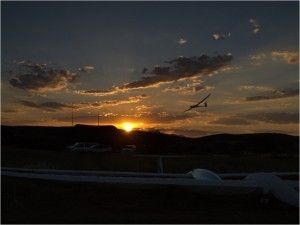 What was it like interacting with World Champions? I realised they are only human, but there is something special driving them to perform at their peak for longer than other pilots. Most importantly they still have fun when flying, even after thousands of hours in the air. Michael Sommer summed it up when he said that you can’t win anything when gliding, you don’t do it for the money and it is not a job, so the only reason is to have fun.
What was it like interacting with World Champions? I realised they are only human, but there is something special driving them to perform at their peak for longer than other pilots. Most importantly they still have fun when flying, even after thousands of hours in the air. Michael Sommer summed it up when he said that you can’t win anything when gliding, you don’t do it for the money and it is not a job, so the only reason is to have fun.
How did the experience change your perception of gliding? Gliding is much more a sport of the mind than I ever thought. My perception changed to see the whole picture, not looking at one day only but seeing the entire competition. I realised that to compete at international level it is necessary to have skills that are gained over many years of flying, and that experience counts much more than natural skill. Skill level will help get round a task 90% of the time, but for the tough times experience is essential to make the right decisions.
AP has around 350 hours and has flown several flights over 400km, and his near-term ambition is to fly 500km in his Cirrus. His long term ambition is to compete (competently) at the international level.
Personal Reflections: Stefano Ghiorzo
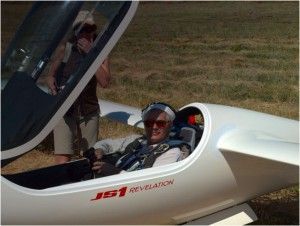 What were your impressions of South Africa? I was already a little familiar with South Africa, having participated in the 2001 WGC at Mafeking and also sharing an ASH25 with Thomas Gostner in 2000. Today my business takes me to West Africa regularly and I can confirm that the reality of southern Africa is far removed from the colonial term “Dark Continent”.
What were your impressions of South Africa? I was already a little familiar with South Africa, having participated in the 2001 WGC at Mafeking and also sharing an ASH25 with Thomas Gostner in 2000. Today my business takes me to West Africa regularly and I can confirm that the reality of southern Africa is far removed from the colonial term “Dark Continent”.
What did you enjoy at Tswalu and were there any special moments? The world of Tswalu is in fact very different. The southeast corner of the Kalahari, known locally as the “green Kalahari”, is a remote and fascinating territory which elicits the so-called “mal d’Africa” (a nostalgia for Africa) from its visitors. Tswalu conceals a fauna that is so rich and primordial that it stuns you every moment. And the game rangers knowingly arrange well-organised safaris to highlight this. At Tswalu every moment is a magic moment: the exclusive resort, the airport in an enclave surrounded by predators, and the JS1 gliders which are a true “revelation”. In addition to all of this I was also blown away by the generosity of the Oppenheimer family towards the South African soaring community (both seniors and juniors). In the spirit of the Helli Lasch Challenge, beyond simply remembering a gliding pioneer, there is the clear desire to perpetuate his sense of adventure and discovery.
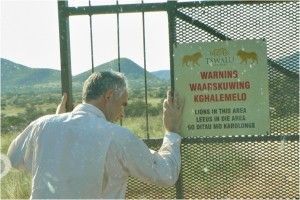 Do you have any observations about the SA Squad training? Andy Davis skillfully analysed the fundamental concepts of contest flying and the factors that determine success in competition: an excellent mix of theory and practice. But not only this, having all the world champions re-united and primed for discussion gave a unique and interesting opportunity for comparing and contrasting individual values and points of view.
Do you have any observations about the SA Squad training? Andy Davis skillfully analysed the fundamental concepts of contest flying and the factors that determine success in competition: an excellent mix of theory and practice. But not only this, having all the world champions re-united and primed for discussion gave a unique and interesting opportunity for comparing and contrasting individual values and points of view.
Any closing thoughts? I cannot neglect to thank the Oppenheimer family (and all the organizing staff) for an unforgettable experience and I wish that this initiative can continue to be available to other pilots in the future.
Stefano’s sentiments are shared by everyone who has had the opportunity to visit Tswalu with the Helli Lasch Challenge. The Challenge is a genuinely uniquely special event, and it is indeed a privilege and an honour to be invited by the Oppenheimers.
Acknowledgements
Helli Lasch information, quotes & photographs: Helli Lasch, His Gliding Life and Times (ISBN 0-620-34199-8), Gavin Johnson, Peter Eich
Photographs at Tswalu: Andy Durston, Attie Jonker, Sebastian Kawa, François Caffa, Iain Baker
References
www.tswalu.com
www.sebastiankawa.pl
www.jonkersailplanes.co.za


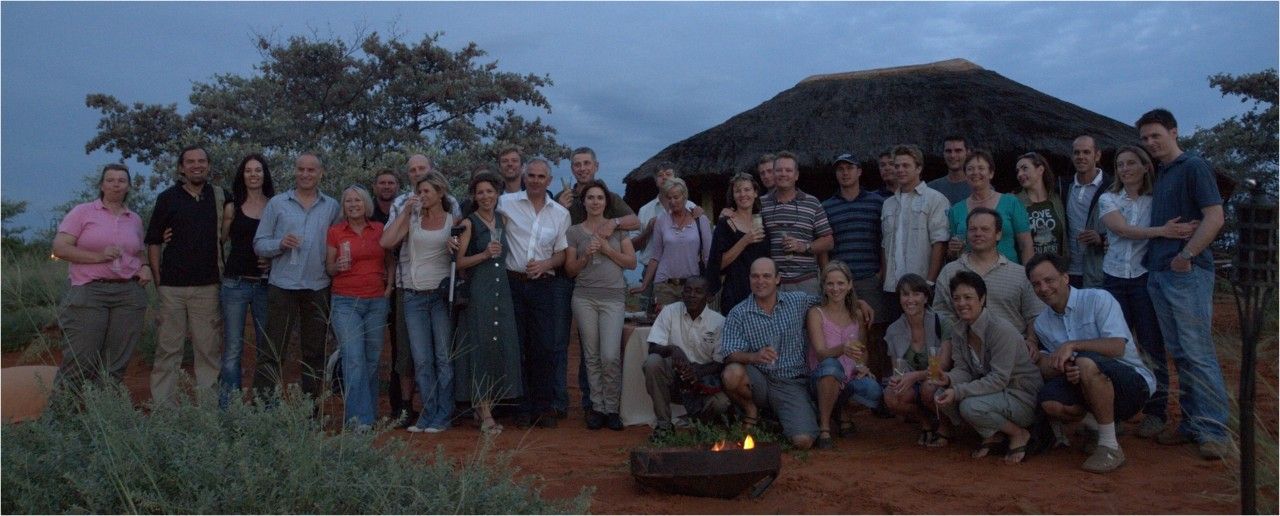






2 comments for “The 5th Helli Lasch Challenge”